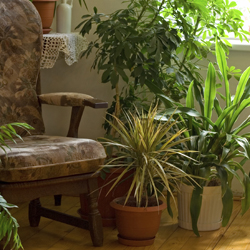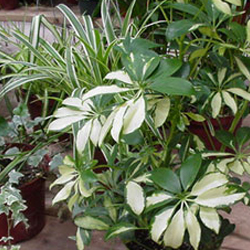Most of the plants we grow in our houses are from the tropics. That’s why they grow well in our warm houses in the winter. Many also thrive outside in our temperate summer. However, when the temperatures start dropping, it’s time to return our green friends to the confines of the house where they will continue to grow while we enjoy their greenery indoors.
Just like children returning to school, transition is important. Abruptly moving a plant from a nice outdoor environment into a house with less humidity, frequent light changes at night and a more consistent temperature can cause shock.
Take a bit of time to ease the plant back into its new seasonal home by first ridding it of any unwanted hitchhiking pests. Many of these insects flourish in the home atmosphere to infect other plants. Using a soft shower water jet, wash the plant and the undersides of the leaves to remove insects and any egg sacks. Consider using an insecticidal soap or spray as an extra precaution. These contain potassium fatty acids to kill many soft-bodied insects and are very effective.
This is also a good time to check to see if the plant needs transplanting. If only a few roots are showing through the drainage hole, wait until spring to transplant. This avoids additional stress during this transition.
Where to place the plant in the house? If possible, try to put in a permanent place similar to the one it enjoyed outdoors. If the plant was under a tree, it probably received dappled sun. Is there a sunny windowsill where it can continue to receive bright, but not direct, light? If the plant will not be staying by the window, let it adjust here before moving to another darker location.
If there is no location similar to what it enjoyed outdoors, consider using a plant light. Many garden centers sell a variety of attractive styles. Some plant lovers set up an area in a back room with fluorescent fixtures hung over tables, creating an interior green house.
Plants returning to the home also need to adjust to the change in humidity. Especially in the winter, most of our homes are relatively dry. Your houseplant will transition better if you can mist it once or twice per day. Depending upon the plant’s transition, it may require more frequent watering.
With a bit of consideration and thought, your returning houseplant will become one of the family as though it never left for its summer vacation.








